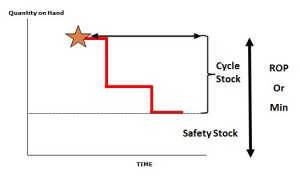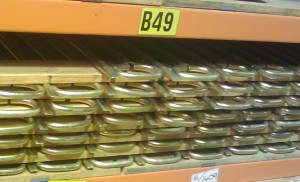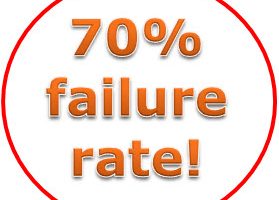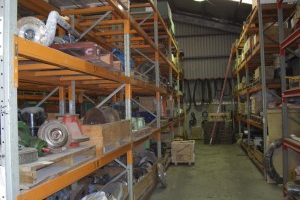Understanding safety stock is one of the most important attributes of high performing spare parts inventory management. Companies that do not understand this will almost invariably over stock their inventory AND experience excessive stock outs. Here is the definition of safety stock. Safety Stock: Items held as an allowance for
Obsolete Inventory: Your Risk is Greater Than You Think
I am sure that you know that risk management is a key aspect of any mature spare parts management process and this is especially so with respect to obsolete inventory. Usually, this takes the form of evaluating the risk associated with a stock out – that is not having a
Excess Inventory: The Real Cost of NOT Reviewing Your Inventory
Excess inventory: What is the real cost of not reviewing your inventory management processes? That’s right I said the cost of NOT reviewing your inventory. Usually when people (me included) raise the topic of the cost of inventory we talk about the financing and management costs of holding inventory. However,
Why Spare Parts Management Goals Are Not Achieved
Subject Area: Spare Parts Management Goals Not achieving your spare parts management goals must be just about the most frustrating experience you can have in your job. You work hard to deliver a project but the promised benefits are just not realized. In fact, recently, the highly regarded consulting group
Who Should Run Your Spare Parts Storeroom?
One question that I get asked a lot is: who should run the spare parts storeroom? The question is often asked out of frustration due to a perceived lack of service or frustration borne from overstocking. I suspect that the answer most people seek is that they should run the storeroom
What are the Benefits of NATO Coding?
Q: What are the Benefits of NATO Coding? A: The benefits of using any standard coding system come from the standardization. This enables easier identification of items for procurement, design, exchange, disposal and so on. The specific economic advantages will be unique to your situation. You can read more on
How Should We Classify Spare Parts Suppliers and Vendors
Q: How should we classify spare parts suppliers and vendors A: My suggestion is that you classify suppliers/vendors of spare parts on a combination of spare part criticality and vendor exclusivity. So, if you have a critical spare part from a vendor that is the sole supplier of that part
How to Manage the Shelf Life of Spare Parts?
Q: Can you please explain the issues around the shelf life of Spare Parts? A: Shelf life is specifically related to the spare part and its storage – there is no one-size-fits-all answer. For example, bearing suppliers will typically advise that bearings will only be reliable for up to 5
Benchmark Figures for KPI Targets
Q: What information can you provide on benchmark figures for warehouse in industrial industries to assist us in setting up our KPI targets. We are reporting on stock accuracy against volume and stock accuracy against value (via stock-check). As well as warehouse stock-turn (goods issued/ave warehouse inventory for the last 12
Which Items Should be Catalogued?
Q: At a high level, what are your thoughts on what ‘should’ be catalogued within an inventory system. Obviously all relevant spare parts that have/require a BoM’s connection are a given, but where do you draw the line on consumable type items. By value? By purchasing frequency? Particularly if these




